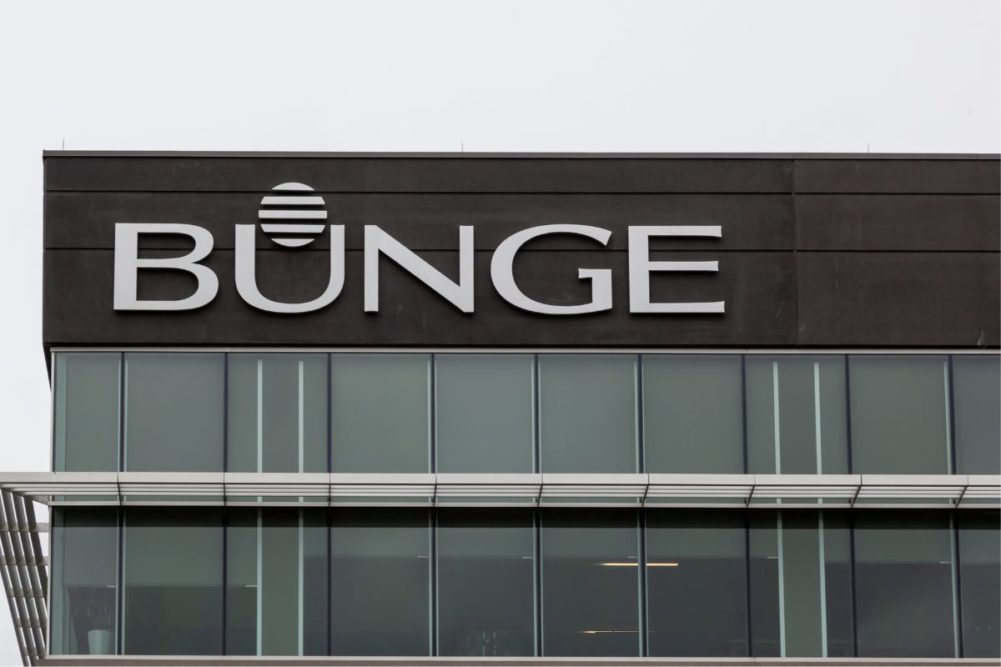 KANSAS CITY, MISSOURI, US – In a 2021 interview with Sosland Publishing Co. President and Milling & Baking News editor Josh Sosland, Bunge Chief Executive Officer Gregory Heckman hinted that a seismic transaction, like the company’s recent acquisition of major grain trader Viterra, could be on the horizon.
KANSAS CITY, MISSOURI, US – In a 2021 interview with Sosland Publishing Co. President and Milling & Baking News editor Josh Sosland, Bunge Chief Executive Officer Gregory Heckman hinted that a seismic transaction, like the company’s recent acquisition of major grain trader Viterra, could be on the horizon.
The company, he said, was transitioning from a reorganizing and rebuilding phase to an era of expansion and growth.
“We’ve earned the right to grow,” Heckman said at the time. “We’ve put the performance together a number of quarters in a row for the last year and a half, and now we start to look at growth.”
The following year, Bunge entered partnerships with oil producer Chevron to crush oilseeds for renewable diesel and seedmaker Corteva to tailor crops for biofuel feedstocks. But the St. Louis, Missouri, US-based company’s boldest move was announced on June 13 of this year with the acquisition of Glencore-backed Viterra, another top agribusiness company with assets in 37 countries. Already the world’s largest soybean processor, Bunge is now positioned to expand its global footprint by adding Viterra’s numerous grain and oilseed origination and processing assets throughout the world.
For many years, Bunge has been the smallest of the so-called “ABCD” global agribusiness giants (ADM, Bunge, Cargill and Louis Dreyfus). However, with this merger, which is expected to gain regulatory approval in mid-2024, Bunge would push past Louis Dreyfus, based on 2022 revenue, and closer to Cargill and ADM. Cargill posted sales of $165 billion last year, ADM $102 billion, Bunge/Viterra $67 billion and Louis Dreyfus $59 billion.
When Heckman joined Bunge in 2019, it was a financially underperforming company that in recent years had been a takeover target of several competitors, including ADM and Glencore. Bunge managed to fend off those bids and remain independent. It then hired Heckman and the rest, as they say, is history.
Soon after he was hired, Heckman went on a global “listening tour,” where he met with the company’s regional leaders. Heckman said he saw the need to make changes in the company’s management and operation structure, making it more centralized, as well as making a series of divestitures. In 2019, Bunge transferred its Brazilian sugar and bioenergy assets to a joint venture with BP. During the next three years, it ended its investment in a renewable energy company in Iowa, sold 35 US grain elevators to Zen-Noh Grain Corp., sold a rice mill in California, and sold a refinery in the Netherlands.
Having shed those assets, Bunge turned its focus to business segments where it saw a path toward satisfactory returns. The company continued to post stellar quarterly earnings and accumulate significant cash reserves, which would enable it to make key acquisitions when the opportunity and timing was right.
The acquisition of Viterra, which has grain origination assets in North America, South America, Australia and Europe, was significant not only for Bunge but the international grain industry as the ABCD companies, which already controlled an estimated 90% of the global grain trade before the announced merger, will increase their market share even more.
The dramatic turnaround at Bunge, which in only four years put itself in a position to be the hunter rather than the hunted, is one of the global grain industry’s most captivating developments in recent memory. It will be fascinating to see what other moves this nimble, innovative and ascending company makes in the coming years.
Arvin Donley is editor of World Grain.






